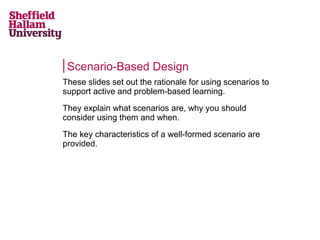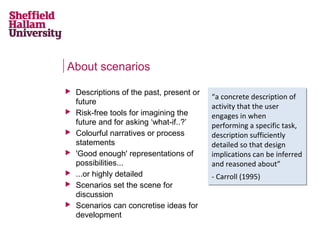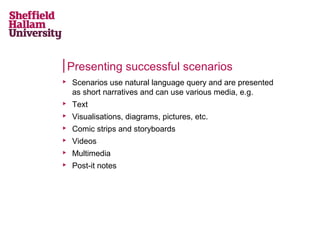This document discusses scenario-based design and provides guidance on using scenarios to support active and problem-based learning. It defines scenarios as concrete descriptions of user activities during specific tasks that allow designers to infer implications. Scenarios can describe past, present or future situations risk-free and help designers imagine possibilities. Well-formed scenarios include goals, settings, actors and plots describing actions and events. Scenarios address challenges like reflection, collaboration, risk management and considering multiple views. They should be presented using natural language and various media like text, diagrams and videos.







